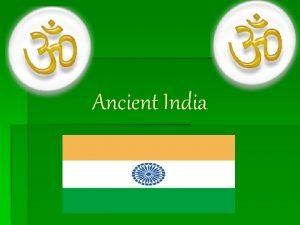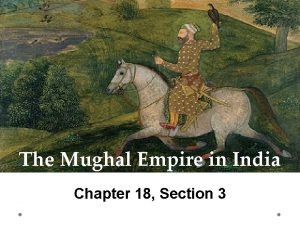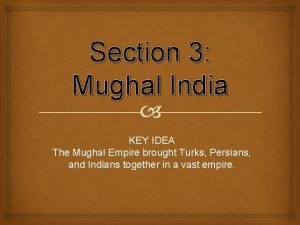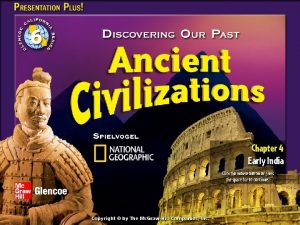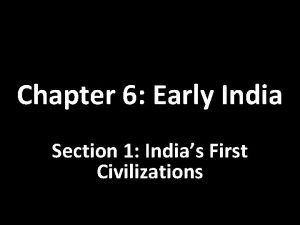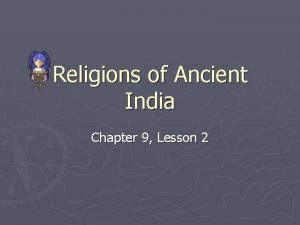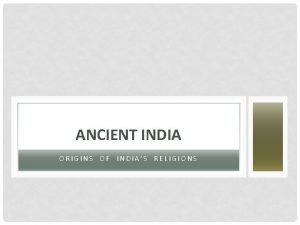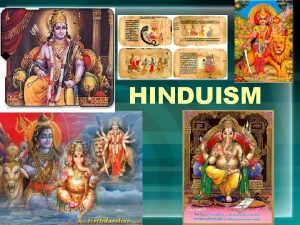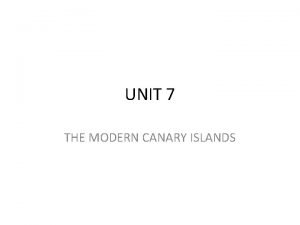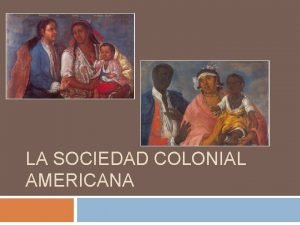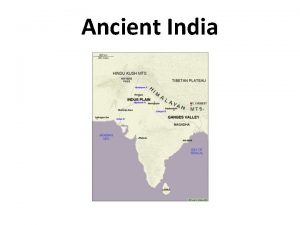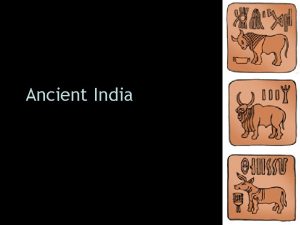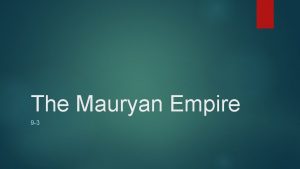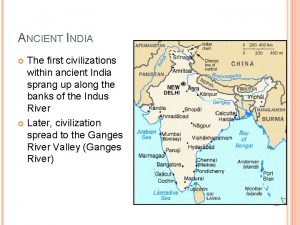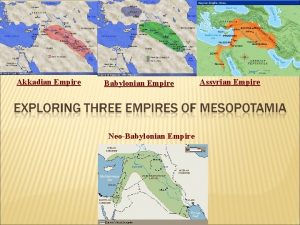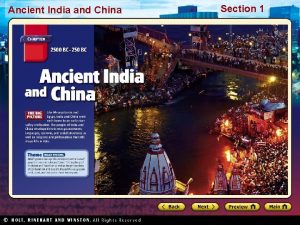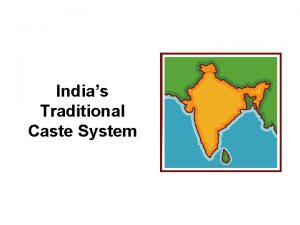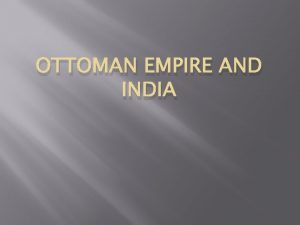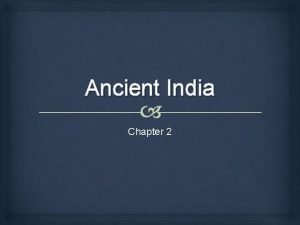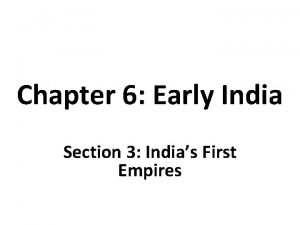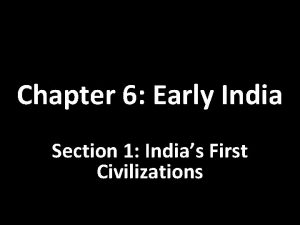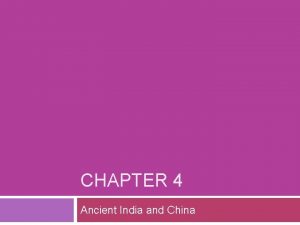Ancient India Indias First Empire Chapter Seven Section















- Slides: 15

Ancient India

India’s First Empire Chapter Seven Section One

India Objective Trace the impact of Indo-European migration on language, literature, technology, religion, and social classes

Setting the Stage q By 600 B. C. almost 1, 000 years after the Aryan migrations, many small kingdoms were scattered throughout India q 326 B. C. Alexander the Great brought the Indus Valley under Macedonian control q Chandragupta Maurya (chuhn*druh*GUP*tah MAH*oor*yuh) – a great Indian military leader – seized power

First Indian Empires q 326 B. C. Alexander the Great conquered parts of India but left almost immediately q the military leader Chandragupta Maurya grabbed the throne in 321 B. C. which began the Mauryan Empire q by 303 B. C. the Muryan Empire stretched more than 2, 000 miles = united north India politically for the first time q to win wars of conquest: q he raised an army q nearly 600, 000 men q 30, 000 cavalry men q 9, 000 elephants q to conquer all of India which included some areas still under Macedonian control

First Indian Empires q taxes were extremely high in order to pay for the army q Chandragupta relied on an adviser named Kautilya (kow*TIHL*yuh) who was a member of the priestly caste q Kautilya wrote a ruler’s handbook = Arthasastra (AHR*thuh*SHAHS*truh) q book proposed tough minded policies to hold an empire together q created a highly organized government to run the different provinces = assassination, spying, and other tactics used to keep people in line

1 st Indian Empires q Asoka (uh*SOH*kuh) = grandson of Chandragupta Maurya q 269 B. C. = upon his father’s death, Asoka took the thrown q followed in Chandragupta’s footsteps – waging war to expand his empire q Bloody war with the neighboring Kalinga q 100, 000 soldiers were slain q even more civilians perished q Asoka turned to the practice of Buddhism, which preaches nonviolence and religious toleration

Asoka Promotes Buddhism q Buddhist pillars and statues were erected spelling out the changes q some edicts guaranteed that Asoka would treat his subjects fairly and humanely q others preached non-violence q others urged religious toleration Religious tolerance: acceptance of people who held different religious beliefs q Asoka helped spread Buddhism throughout Southeast Asia q Asoka builds extensive roads and rest areas for the government officials and others to travel

A period of turmoil q the empire falls apart upon the death of Asoka in 232 B. C. q rival factions and outside invaders soon take over the area q After 500 years of invasion and turmoil, a strong leader again arose Chandra Gupta (GUP*tuh) q there is no relation to the first leader reestablished the Indian Empire

The Gupta Empire is Established q Hinduism, trade, and the arts flourished under Gupta’s reign q the Gupta reign ends in 535 A. D. when the Hunas (Hun relation) invaded

Gupta Achievements q calendar based on the cycles of the sun instead of the moon (Greek) q adopted 7 -day week and divided day into hours q proved the Earth was round almost 1, 000 years before Columbus (eclipses) q advanced in math- modern numerals, zero, decimal system invented in India q concluded a solar year was 365. 3 days

Gupta Achievements q performed surgeries and gave injections q valuable goods such as spices, gems, and fragrances have been traded around the world q used coastal routes around the rim of the Arabian Sea and up the Persian Gulf q used the Silk Roads

Taj Mahal One of 8 Wonders of the World q. Taj Mahal was built by a Muslim Emperor Shah Jahan (died 1666 C. E. ) qbuilt in the memory of his dear wife and queen Mumtaz Mahal at Agra, India

Essential Question Which Indian ruler – Gupta or Asoka – would you rather live under? Explain. Write three complete sentences in the summary location on your note sheet

India Objective Trace the impact of Indo-European migration on language, literature, technology, religion, and social classes
 Indias first empire
Indias first empire The maurya and gupta empires
The maurya and gupta empires Chapter 18 section 3 the mughal empire in india
Chapter 18 section 3 the mughal empire in india The mughal empire in india chapter 18 section 3
The mughal empire in india chapter 18 section 3 Indias first civilization
Indias first civilization Ancient india vs ancient china
Ancient india vs ancient china India's first empire
India's first empire Chapter 7 section 1 india's first empires
Chapter 7 section 1 india's first empires Chapter 9 lesson 2 religions of ancient india
Chapter 9 lesson 2 religions of ancient india Chapter 9 lesson 1 ancient india
Chapter 9 lesson 1 ancient india Indias religions
Indias religions Indias religions
Indias religions What is indias main religion
What is indias main religion Flota de indias ruta
Flota de indias ruta 4 castes
4 castes Que es el real consejo de indias
Que es el real consejo de indias
